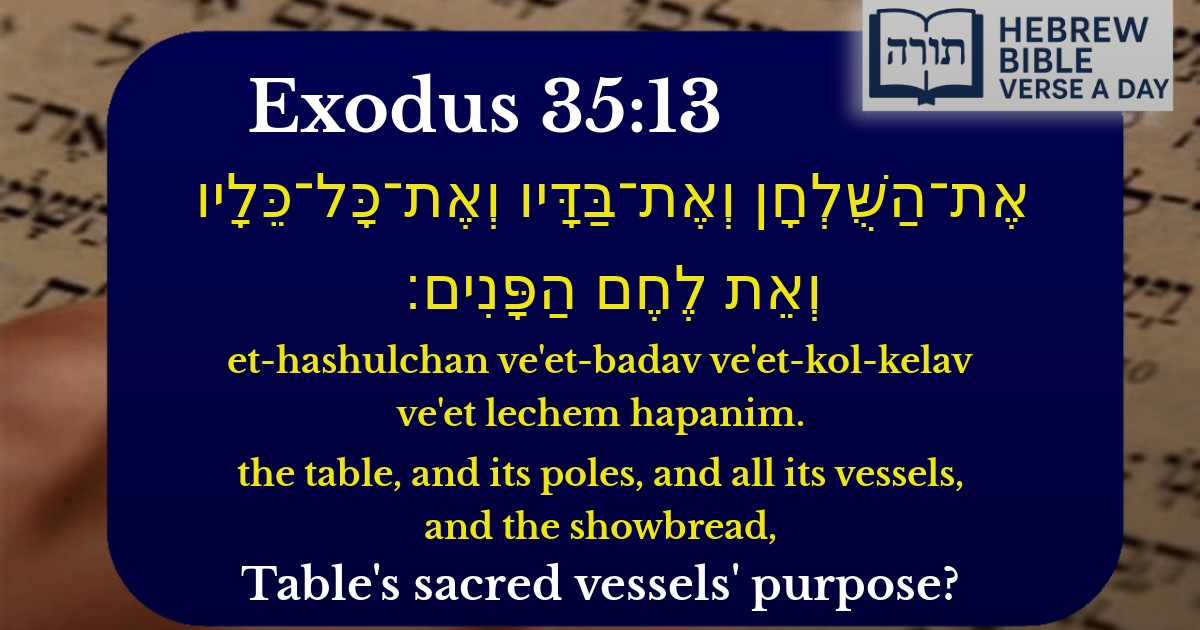Join Our Newsletter To Be Informed When New Videos Are Posted
Join the thousands of fellow Studends who rely on our videos to learn how to read the bible in Hebrew for free!
Hebrew Text
אֶת־הַשֻּׁלְחָן וְאֶת־בַּדָּיו וְאֶת־כָּל־כֵּלָיו וְאֵת לֶחֶם הַפָּנִים׃
English Translation
the table, and its poles, and all its vessels, and the showbread,
Transliteration
Et-hashulchan ve'et-badav ve'et-kol-kelav ve'et lechem hapanim.
Hebrew Leining Text
אֶת־הַשֻּׁלְחָ֥ן וְאֶת־בַּדָּ֖יו וְאֶת־כׇּל־כֵּלָ֑יו וְאֵ֖ת לֶ֥חֶם הַפָּנִֽים׃


The Shulchan (Table) in the Mishkan
The verse describes the components of the Shulchan (Table) in the Mishkan, including its poles, vessels, and the Lechem HaPanim (Showbread). According to Rashi (Shemos 25:23), the Shulchan was made of acacia wood overlaid with pure gold, symbolizing both material sustenance and spiritual elevation. The table represents the Divine blessing of sustenance, as the presence of the Lechem HaPanim demonstrated Hashem's continuous providence.
The Lechem HaPanim (Showbread)
The Lechem HaPanim consisted of twelve loaves arranged in two stacks (Menachos 96a), corresponding to the twelve tribes of Israel. The Rambam (Hilchos Temidin U’Musafin 5:9) explains that these loaves were replaced every Shabbos and were later eaten by the Kohanim, symbolizing that physical sustenance is ultimately sanctified through Divine service.
The Poles (Badim) of the Shulchan
The Badim (poles) were used to carry the Shulchan during travel (Rashi, Shemos 25:27). Unlike the Aron’s poles, which were never removed, the Shulchan’s poles were inserted only when needed, teaching that while material needs must be portable and adaptable, Torah (symbolized by the Aron) remains constant (Kli Yakar, Shemos 25:15).